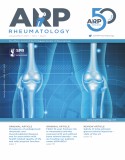Complications associated with surgical treatment for pediatric spine deformities: A single center 10-years experience
Authors
Pedro Fernandes; Isabel Flores; Joaquim Soares do Brito;
Keywords
Introduction: The surgical treatment for pediatric spine deformity is complex and often associated with complications, which generates important clinical and economic impact. Herein the authors analyze the prevalence of complications in surgery for pediatric spine deformity, the correlation between complications and several risk factors, and present a preventive algorithm for these events.
Material and methods: We collected for analysis the data regarding pediatric patients with spine deformities surgically treated in our institution through a 10 years period with 100% revision rate and a 24-month minimum follow-up were included. The statistical analysis was performed using SPSS Statistics 23.
Results: 70 complications (33,4%) were identified in 56 patients (26,7%), of which 38 (54,2%) were acute and 32 (45,7%) late complications. Pulmonary complications (7.1%), surgical site infection (6.6%) and junctional kyphosis (4.3%) were the most frequent events. Scoliosis etiology was especially correlated with general complications (p < 0.05) and early complications (p < 0.01). A logistic regression model identified preoperative hemoglobin (Exp =1.476; P=0.044), fused levels (Exp =-0.677; P=0.023) and titanium implants (Exp =0.257, P < 0.000) as relevant factors for complications. Area under the curve was 0.744, and, when using the best cutting point, the model was capable of predicting absence of complications in 84% of cases, and its occurrence in 56%.
Discussion: Pulmonary complications, surgical site infection and junctional events were identified as the most frequent complications after pediatric scoliosis surgery. By developing high risk protocols to decrease these events, patient safety will be significantly enhanced. Risk assessment makes part of this process and our predictive model by identifying two modifiable factors and including another that relates to procedure invasiveness may help avoiding complications and improve outcomes.
ctors for complications. Area under the curve was 0.744, and, when using the best cutting point, the model was capable of predicting absence of complications in 84% of cases, and its occurrence in 56%.
Pedro Fernandes
Orthopedic Department, University Hospital of Santa Maria
Isabel Flores
Statistics, ISCTE-IUL
Joaquim Soares do Brito
Orthopedic Department, University Hospital of Santa Maria
Orthopedic Department, University Hospital of Santa Maria
Isabel Flores
Statistics, ISCTE-IUL
Joaquim Soares do Brito
Orthopedic Department, University Hospital of Santa Maria





